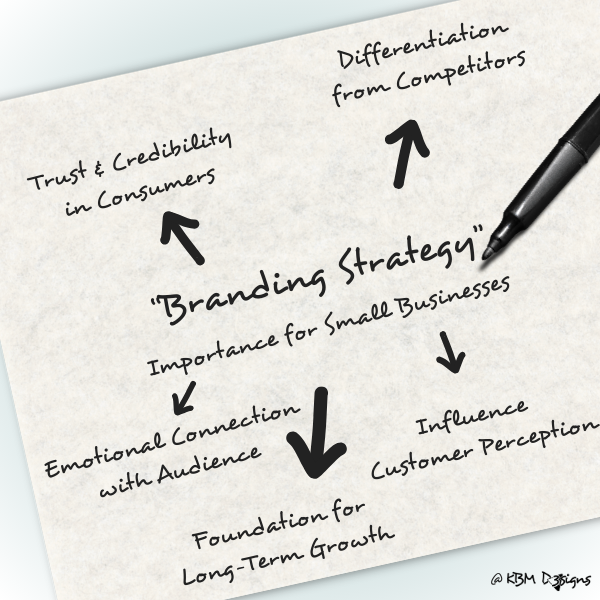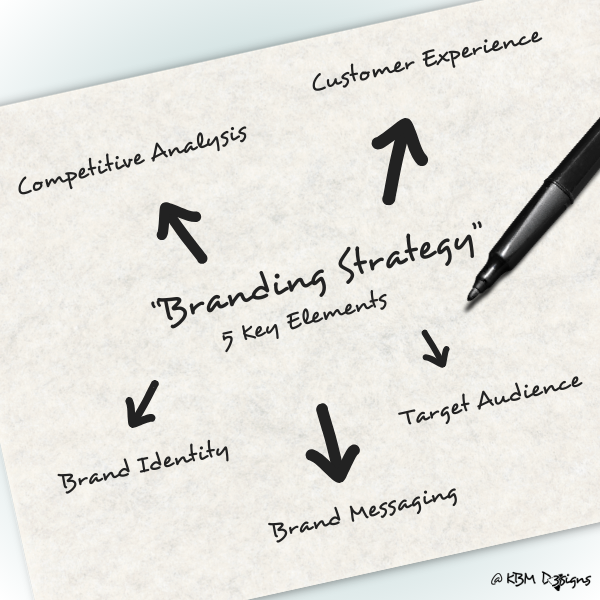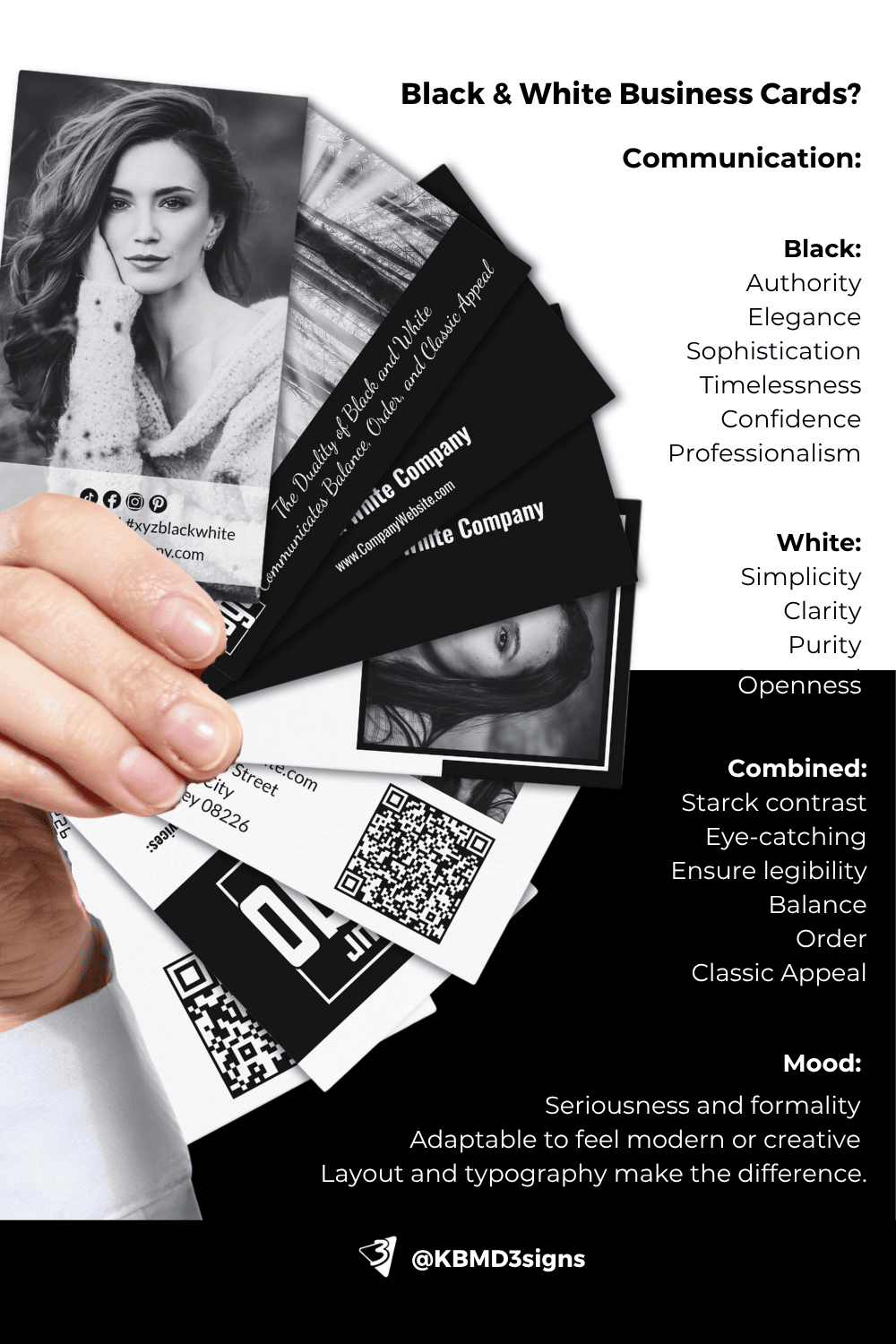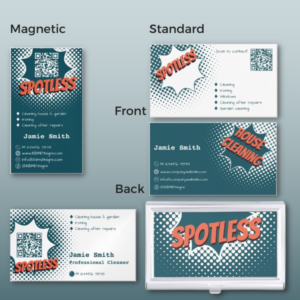What is a branding strategy? – And why exactly is it so important? Let’s explore this concept from a small business perspective. Establishing a strong brand is crucial for small businesses to stand out and thrive in today’s crowded marketplace.
1. Defining Branding Strategy

- Definition: Branding strategy refers to the specific tactics and activities that a business employs to execute its brand strategy. It encompasses the tangible elements of branding, such as logo design, color schemes, typography, packaging, advertising campaigns, and customer interactions.
- Focus: Branding strategy focuses on the implementation of the brand strategy through various touch-points and channels. It involves translating the brand’s identity and messaging into visual and experiential elements that resonate with consumers.
- Purpose: The purpose of branding strategy is to create consistent, memorable brand experiences that reinforce the brand’s identity and values, evoke positive emotions, and foster strong connections with consumers.
Article Content:
- Defining Branding Strategy
- The Importance of It for Small Businesses
- Key Elements of a Branding Strategy
- How to Develop an Effective Branding Strategy for a Small Business?
- Seven Common Branding Strategy Mistakes and How to Avoid Them?
- What Are Possible Brand Objectives and How to Align a Branding Strategy?
- Frequently Asked Questions About Branding Strategy
2. The Importance of It for Small Businesses
For small businesses, where competition can be fierce and resources limited, a well-thought-out branding strategy can make all the difference.

Here’s why:
- Differentiation: In a crowded marketplace, having a distinct brand helps small businesses differentiate themselves from competitors. A strong brand identity sets them apart and makes them more memorable to customers.
- Trust and Credibility: A cohesive branding strategy instills trust and credibility in consumers. When a business presents itself consistently across all touch-points, it reassures customers of its reliability and professionalism.
- Emotional Connection: Brands that evoke emotions are more likely to resonate with consumers. Through branding strategy, small businesses can connect with their audience on a deeper level, fostering loyalty and advocacy.
- Value Perception: Effective branding can influence how customers perceive the value of a product or service. By positioning themselves strategically in the market, small businesses can command higher prices and attract customers willing to pay for quality.
- Long-Term Growth: Investing in branding strategy lays the foundation for long-term growth. A strong brand not only attracts new customers but also fosters repeat business and referrals, driving sustainable success.
3. Key Elements of a Branding Strategy
While every branding strategy is unique to the business it represents, there are several fundamental elements that small businesses should consider:

- Brand Identity: This includes the visual aspects of a brand such as logo, colors, typography, and design elements. Consistency is key to building brand recognition.
- Brand Messaging: The language and tone used to communicate with customers should reflect the brand’s personality and values. Crafting a compelling brand story can help engage audiences and create emotional connections.
- Target Audience: Understanding the demographics, needs, and preferences of the target audience is essential for tailoring branding efforts effectively.
- Competitive Analysis: Assessing competitors’ branding strategies can provide valuable insights into market positioning and opportunities for differentiation.
- Customer Experience: Every interaction a customer has with a brand shapes their perception. Providing exceptional customer experiences at every touch-point is integral to a successful branding strategy.
A branding strategy serves as a guide for small businesses navigating the competitive landscape in the dynamic world of business. Small businesses can carve out a niche and pave the way for long-term success. They do this by defining their identity, connecting with customers on a deeper level, and setting themselves apart from the crowd.
4. How to develop an effective branding strategy for a small business?
Developing an effective offline branding strategy for a small business involves several key steps to ensure visibility, consistency, and engagement with the target audience.
Here’s a comprehensive guide:
4-1. Define Your Brand Identity:
- Start by clearly defining your brand identity, including your mission, values, and unique selling proposition (USP).
- Develop a memorable brand name, logo, and visual elements that reflect your brand personality and resonate with your target audience.
4-2. Understand Your Target Audience:
- Conduct market research to understand the demographics, behaviors, and preferences of your target audience.
- Identify their pain points and needs to tailor your branding strategy effectively.
4-3. Develop Consistent Branding Collateral:
- Create consistent branding collateral, including business cards, brochures, flyers, and signage.
- Ensure that all materials reflect your brand identity, messaging, and visual elements.
4-4. Utilize Traditional Advertising Channels:
- Explore traditional advertising channels such as print media, radio, and TV ads to reach a local audience.
- Select media outlets that align with your target audience demographics and interests.
4-5. Participate in Local Events and Sponsorships:
- Get involved in local events, trade shows, fairs, and community sponsorships to increase brand visibility.
- Set up booths or tables to showcase your products or services and engage with potential customers face-to-face.
4-6. Leverage Networking Opportunities:
- Attend networking events, industry conferences, and business gatherings to build relationships with other professionals and potential clients.
- Distribute branded promotional items such as pens, notepads, or merchandise to leave a lasting impression.
4-7. Implement Guerrilla Marketing Tactics:
- Get creative with guerrilla marketing tactics such as sidewalk chalk art, stencil graffiti, or flash mobs to generate buzz and intrigue around your brand.
- Make sure your guerrilla marketing efforts align with your brand identity and values.
4-8. Optimize Local SEO:
- Optimize your online presence for local search by claiming and optimizing your Google My Business listing.
- Encourage satisfied customers to leave positive reviews, which can enhance your credibility and visibility in local search results.
4-9. Partner with Local Businesses or Organizations:
- Collaborate with complementary local businesses or organizations on co-branded promotions, events, or cross-promotional campaigns.
- Building strategic partnerships can help you reach new audiences and enhance your brand’s credibility.
4-10. Measure and Adapt:
- Track the performance of your offline branding efforts through metrics such as foot traffic, customer inquiries, referral programs, and brand awareness surveys.
- Use this data to assess the effectiveness of your strategy and make adjustments as needed to optimize results.
By following these steps and continually refining your approach, you can develop an effective offline branding strategy that helps your small business stand out in the local market and build lasting connections with customers.
Discover the Uniqueness of Designs by KBM D3signs on Marketing Materials
Our commitment to our mission is reflected in our exceptional marketing materials designed by KBM D3signs. We strive to simplify the customization process by offering easily customizable templates within our marketing packages. Our belief is rooted in the idea that everyone should have the freedom to choose their preferred colors for a selected design, ensuring that it perfectly matches your vision and needs.
At the Cocoon It! Store by KBM D3signs on Zazzle puts all the branding elements and color schemes in your hands. Whether you’re choosing products with a QR code – where the second color is limited to black or white for optimal contrast – or exploring the vast array of customizable elements through the “Edit further” link, your brand’s unique identity is yours to define.
We use color tools to help you choose the perfect hues, and for additional inspiration, explore our curated collection of color palette ideas. Our commitment to customization goes beyond placeholders-almost all elements can be customized to match your chosen colors.
If you need additional assistance customizing or transferring designs to different products, or if you have a unique vision that requires a custom design, we are just a message away. At Designs by KBM D3signs, we go beyond providing marketing materials; we empower you to shape and showcase your brand with creativity and personalization.
Shop at Zazzle Store
Cocoon It! – Business Cards & Marketing Items
5. Seven Common Branding Strategy Oversights And How To Correct Them?
Yes, there are several common branding strategy mistakes that businesses often make. Here are some of them along with tips on how to avoid them:
5-1. Lack of Brand Consistency:
Mistake: Inconsistency in branding elements such as logo, colors, messaging, and tone can confuse customers and dilute brand identity.
Solution: Develop brand guidelines that clearly outline how the brand should be presented across all channels and ensure that everyone involved in brand communication adheres to these guidelines.
5-2. Ignoring Target Audience Needs:
Mistake: Failing to understand the needs, preferences, and pain points of the target audience can result in ineffective branding strategies that do not resonate with customers.
Solution: Conduct thorough market research to gain insights into the target audience and tailor branding efforts to address their specific needs and interests.
5-3. Copying Competitors:
Mistake: Attempting to imitate or replicate the branding strategies of competitors can lead to a lack of differentiation and make the brand appear unoriginal.
Solution: Focus on identifying the unique value proposition and strengths of the brand and develop a distinct brand identity and positioning that sets it apart from competitors.
5-4. Neglecting Brand Experience:
Mistake: Focusing solely on external branding efforts without paying attention to the overall customer experience can result in a disconnect between brand promises and reality.
Solution: Prioritize delivering exceptional customer experiences at every touch-point, from pre-purchase interactions to post-purchase support, to reinforce brand values and build loyalty.
5-5. Failing to Adapt to Changing Market Trends:
Mistake: Sticking rigidly to a predefined branding strategy without adapting to evolving market trends and consumer preferences can result in the brand becoming outdated and irrelevant.
Solution: Continuously monitor market trends, consumer behavior, and competitor activities, and be willing to adjust branding strategies accordingly to stay relevant and competitive.
5-6. Overlooking Employee Engagement:
Mistake: Neglecting to involve employees in the branding process and failing to educate them about the brand values and messaging can undermine internal alignment and consistency.
Solution: Engage employees as brand ambassadors by providing training on brand guidelines, values, and messaging, and empower them to embody the brand identity in their interactions with customers.
5-7. Measuring Branding Success Incorrectly:
Mistake: Relying solely on vanity metrics such as website traffic or social media followers to measure branding success can provide misleading indicators of brand performance.
Solution: Define clear objectives and key performance indicators (KPIs) aligned with business goals, such as brand awareness, brand perception, customer engagement, and customer loyalty, and use qualitative and quantitative measures to evaluate branding effectiveness.
By being aware of these common branding strategy mistakes and implementing the suggested solutions, businesses can develop more effective and impactful branding strategies that resonate with their target audience and drive long-term success.
6. What Are Possible Brand Objectives and How to Align a Branding Strategy?
Brand objectives serve as the guiding principles that drive a company’s branding efforts and align them with its overall business goals. Here are some common brand objectives and strategies to align them:
Increase Brand Awareness:
- Strategy: Invest in marketing campaigns across various channels to increase visibility and reach.
- Utilize social media platforms, content marketing, influencer partnerships, and traditional advertising to raise brand awareness.
- Ensure consistency in brand messaging and visual identity to enhance recognition.
Build Brand Equity:
- Strategy: Focus on creating a positive perception of the brand and increasing its value in the eyes of consumers.
- Deliver exceptional products or services that exceed customer expectations.
- Engage in corporate social responsibility initiatives to enhance brand reputation and goodwill.
- Leverage storytelling and emotional branding to forge strong connections with customers.
Drive Customer Engagement:
- Strategy: Encourage active participation and interaction with the brand.
- Develop engaging content that resonates with the target audience and encourages sharing and participation.
- Foster community building through social media platforms, forums, and user-generated content campaigns.
- Implement loyalty programs and personalized experiences to incentivize repeat engagement.
Establish Brand Differentiation:
- Strategy: Differentiate the brand from competitors and highlight its unique value proposition.
- Conduct market research to identify gaps or underserved needs in the industry.
- Develop a distinctive brand identity, including logo, colors, and visual elements, that sets the brand apart.
- Emphasize unique selling points and communicate them effectively through marketing messages.
Drive Sales and Revenue:
- Strategy: Generate leads, convert prospects into customers, and maximize sales opportunities.
- Develop targeted marketing campaigns aimed at specific customer segments or buying personas.
- Optimize the customer journey to streamline the path to purchase and reduce friction.
- Utilize data analytics to track customer behavior and preferences, enabling personalized marketing and sales efforts.
Enhance Brand Loyalty and Advocacy:
- Strategy: Cultivate strong relationships with existing customers and turn them into brand advocates.
- Offer exceptional customer service and support to foster loyalty and satisfaction.
- Implement loyalty programs, referral incentives, and exclusive perks for loyal customers.
- Encourage user-generated content, testimonials, and reviews to amplify positive word-of-mouth.
By aligning branding strategies with specific objectives, businesses can effectively chart their course towards achieving desired outcomes and maximizing their brand’s impact in the marketplace.
-

Gray Business Cards: Perfect Blending Of Sophistication And Versatility
Read the post …: Gray Business Cards: Perfect Blending Of Sophistication And Versatility -

Brand Color Blue : Business Card Designs with an Edge
Read the post …: Brand Color Blue : Business Card Designs with an Edge -

Black And White Business Card Designs – How to Stand Out
Read the post …: Black And White Business Card Designs – How to Stand Out
7. Frequently Asked Questions About Branding Strategy
A branding strategy is a comprehensive plan that outlines how a company aims to establish and promote its brand to achieve specific business objectives. It involves defining the brand identity, messaging, positioning, and the tactics to communicate with target audiences.
A branding strategy is crucial because it helps businesses differentiate themselves from competitors, build brand recognition and loyalty, influence customer perceptions, and drive long-term growth and profitability.
Key components include brand identity (logo, colors, design elements), brand messaging (tone, voice, value proposition), target audience definition, competitive analysis, customer experience strategy, and brand positioning.
While marketing involves promoting products or services to generate sales, branding is about creating a distinct identity and perception for the brand itself. Marketing tactics support the execution of a branding strategy.
Small businesses can start by defining their unique value proposition, understanding their target audience, conducting competitive research, creating a compelling brand identity, and consistently communicating their brand message across all channels.
Results from a branding strategy can vary depending on various factors such as industry, market conditions, budget, and the effectiveness of execution. It typically takes time to build brand awareness and equity, but consistent effort can yield positive results over time.
Metrics for measuring branding success may include brand awareness surveys, customer perception studies, brand sentiment analysis, website traffic, social media engagement, customer retention rates, and revenue growth.
Yes, a branding strategy should be dynamic and adaptable to changing market trends, consumer preferences, and business goals. It’s important for businesses to regularly review and adjust their branding strategies as needed.
Common mistakes include inconsistency in brand messaging or visual identity, failing to understand the target audience, copying competitors instead of being authentic, and neglecting the importance of customer experience.
Businesses can ensure internal alignment by educating employees about the brand values and mission, providing training on brand guidelines, fostering a culture that reflects the brand ethos, and empowering employees to be brand ambassadors.
-

What Is Brand Development Strategy? – Small Businesses Success
Read the post …: What Is Brand Development Strategy? – Small Businesses Success -

How To Do Market Research – Starting A Small Business
Read the post …: How To Do Market Research – Starting A Small Business -

How To Design A Logo For A Small Business?
Read the post …: How To Design A Logo For A Small Business?











